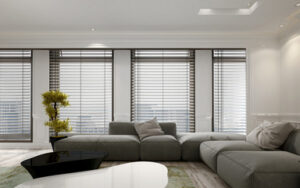Keeping the interior ceiling in good condition is important for maintaining the structure and aesthetic of a room. Regular inspections can help to spot potential problems before they become serious issues.

Water damage in the ceiling is a common issue that can lead to mold growth and structural problems. Replacing damaged materials and addressing underlying moisture problems can help to resolve these issues. Reach out to Ceiling Repairs Perth for expert assistance.
When water damage occurs to your ceiling, it must be addressed quickly to prevent mold growth and structural problems. The first step is to find the source of the leak. This may include a clogged gutter, roof damage, fire sprinklers, or condensation from your AC unit. Once the issue is resolved, you can focus on repairing the ceiling.
Drying the area is also important to avoid microbial problems. Using fans and dehumidifiers will help speed up the process. It is recommended that you use a moisture meter to ensure that the drywall is dry before starting repairs. Once the drywall is dry, it is important to make sure that you paint it with a water-resistant primer. This will protect your ceiling from future water damage.
If the hole is large, you should cover it with a piece of drywall cut to fit the area. This will create a smooth transition and ensure that the patch is sturdy. Next, you should fill the hole with setting-type joint compound. Make sure to smooth the compound well, as this will help it blend with the surrounding drywall.
Water damage to a ceiling can be costly, especially if it is not repaired promptly and properly. This can lead to mold growth and severe structural damage. Regular inspections and identifying issues early can help you control your repair costs.
While you can repair a small hole or crack in your ceiling yourself, it’s best to hire a professional for larger repairs or water-damaged ceilings. Professionals can offer a more accurate estimate per square foot and repair the root cause of the damage. Plus, they can do the job in a much faster and more efficient manner than a DIYer.
Cracks
Cracks in the ceiling are a common occurrence and they come in many shapes, lengths and depths. Some are cosmetic in nature and not indicative of structural damage while others could be serious and warrant immediate attention. Differentiating between these types of cracks is essential as ignoring them could lead to further issues like mold growth or even collapse of the ceiling itself.
If the cracks are fine and straight, they may be due to natural home settling and should be monitored but not necessarily repaired immediately. However, if they extend down the walls, it’s likely an indication of structural damage and should be examined by a professional. Also, if the cracks are paired with a sagging ceiling they should be considered an emergency and addressed right away.
Water leaks are another common cause of ceiling cracks and should be dealt with as soon as they occur. Water damage can not only cause unsightly staining but it can weaken the drywall and potentially compromise the structure of the ceiling. In addition, prolonged water exposure can foster mold growth, posing health risks to the home’s inhabitants.
Once the joint compound has dried, gently sand the area to make it smooth and flush with the rest of the ceiling. Wipe any dust off the sanded surface and apply a coat of primer to help the paint adhere properly. Allow the primer to dry before applying the ceiling paint, using a roller for larger areas and a brush for edges and corners. Ensure that the color of the paint matches that of the rest of the room to avoid showing a patched area. If the drywall is covered with insulation, you’ll need to remove it before beginning.
Popcorn Ceiling
Popcorn ceilings, known for their bumpy texture, were popular in homes built before the 1990s. This textured finish was a quick and inexpensive way to make drywall ceilings look nice, but it has some drawbacks, including sagging and cracking.
Because of their clumped texture, popcorn ceilings can be difficult to clean and maintain. Dust, cobwebs, and stains can easily get trapped in the raised bumps of the texture. These textured surfaces can also cause health problems for people with asthma or other respiratory conditions, as the accumulated dust can aggravate their symptoms.
Despite these problems, popcorn ceilings can still be repaired and restored. When a crack or sag in the ceiling becomes noticeable, it is best to hire a professional to address the issue. Depending on the cause, the repair process may involve patching and painting, or it may need to be replaced or removed completely.
If the sag in the ceiling is caused by structural issues, like damaged joists or trusses, a professional needs to inspect and repair the damage. If the crack is cosmetic, it can usually be fixed by applying joint compound and taping the seams, sanding it down once dry, then priming and painting.
It’s important to properly prepare the work area before beginning a popcorn ceiling removal project. This will help ensure a successful result and prevent unnecessary expenses down the road. Cover all items on the furniture, and secure any valuables that can’t be moved to a safe location. Then, protect yourself with safety goggles and a mask or respirator. Finally, set up a drop cloth to avoid potential spills and debris. If your house is still inhabited, it’s a good idea to ask a professional about whether or not the ceiling contains asbestos and if it would be safer to leave it alone.
Tiles
While ceiling tiles are a low maintenance and long lasting addition to your home, they can be damaged from impact above or from moisture infiltration. It’s important to check the condition of your ceiling tiles frequently and address minor issues promptly, to prevent further damage.
Typically, discoloration or warping of your ceiling tile is caused by water infiltration. If your ceiling tiles have a dark color naturally, the appearance of water staining on them may be interpreted as “tile mold.” A professional assessment by a water damage expert can help you determine the extent of the moisture problem, whether it’s causing structural issues, and if the underlying insulation is affected.
In many cases, the problem is a plumbing leak, but if you have a multistory facility, a roof leak could be the culprit. Ceiling tiles are extremely porous, absorbing liquids and stains quickly. The stain will appear on the other side of the tile, leaving a damp-looking mark.
It’s also possible your ceiling tiles were damaged by an impact from above, causing them to sag. These can be a challenge to repair, but they can be done. Start at the closest wall and carefully remove the sagging tiles, being careful not to pull them loose from the framework beneath them. If they’re glued, use a utility knife to cut into the seams and separate them. If they’re stapled, use a staple lifter like the Arrow SL24D to easily remove the offending staples without damaging the surrounding tiles.
If you notice that a portion of your ceiling is sagging or discolored, it’s best to choose a licensed, insured and bonded ceiling contractor. They’ll be able to inspect the problem and provide a detailed, cost-effective solution.
Structural Issues
Structural problems in a ceiling should be taken seriously, and are often an indicator of a larger issue within a building or home. Depending on the severity, structural issues in the ceiling may be caused by a number of factors including foundation settling or damage from termites.
Unsightly water stains and ceiling sagging are common signs of water-related issues that should be addressed immediately to prevent further damage to the ceiling structure. Persistent leaks from faulty plumbing, roof damage or clogged gutters can cause severe structural damage over time and lead to further issues such as mold growth, health hazards and potential structural collapse.
Cracks in the ceiling are also common problems that indicate underlying issues. Hairline cracks are often cosmetic and simply require joint compound or drywall mud patching, while more significant cracks are a sign of structural damage. Cracks in the ceiling can be caused by a number of issues, from foundation settlement to temperature fluctuations that cause the structure to shift and move, causing movement or expansion in materials such as plasterboard and cornices.
Ceilings are designed to support a certain amount of weight, and shifting or sagging is often a sign that they’re being overloaded. Bathrooms are especially prone to this issue, as bathtubs and vanities place a heavy load on the ceiling that it’s not intended to support. Likewise, attics or upper-level rooms used for storage can see ceiling cracking as a result of concentrated weight distribution that stresses the framing and drywall. Ultimately, any noticeable cracks or sagging in your ceiling should be evaluated by an expert to ensure the safety and longevity of the structure. Contact a professional drywall and painting contractor to help you repair any ceiling damage or structural issues.

